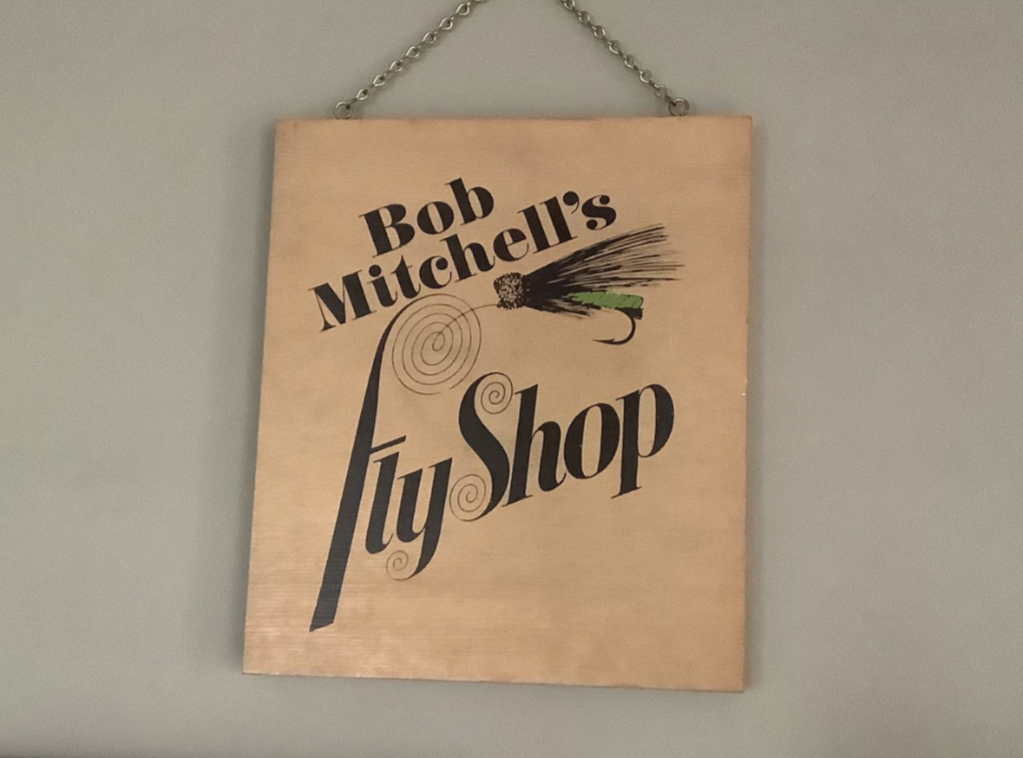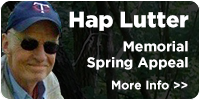
At the original Bob Mitchell’s Fly Shop in Lake Elmo, across the street from the second iteration, you could smell the coffee on your way down the stairs. There was a wooden desk just to the left, where, more often than not, Jean Mitchell was knitting, reminding me of Madame LaFarge during the ‘terror’ in 18th century France. Bob might be tying flies at the vise that was always ready for customers to use, and a group of people, mostly male, was gathered around a table with mugs that had their names on them, telling lies about encounters with big local trout. Dr. Patrick Daly, with those twinkling Irish eyes and turned up black eyebrows, was a Saturday morning regular, as was Dick Schwartz, who loved to tout his Orvis ‘Far and Fine’ as a more than worthy competitor to Sage’s 479LL, an assessment I vigorously opposed. Jonathan Jacobs was usually there too, sometimes with his little daughter, a former board member of our TU chapter. He insisted on calling me Layton instead of Skip like everybody else did, so I will always refer to him by his full name rather than Jon. Legendary guide and caster Bob Nasby showed up to.
Dry Fly Dick Frantes was seen often on the Kinni, but rarely in the fly shop. You could always tell Dick from others on the stream because he wore a white pith helmet when he fished. Dan Bruski was a regular, as were Don Ausemus, Kevin Becker, Denny McGinn, Bill Stieger and Dean Hansen. Dennis Hook and Jan Jancourt brought in bamboo rods for our inspection. A few bamboo rod builders brought in their wares to show off. The names of some of those guys escape me now, but the recent Kiap-TU-Wish ‘Hot Dog Boil’ at the Ellsworth Rod and Gun Club reacquainted me with some of them, whose faces I remembered, but whose names escape me still. In order not to display my ignorance, I conversed with these guys without letting on that I didn’t remember their last names.
In the 70’s and 80’s, I was privileged to be as much an employee as a customer. My pay for helping out was a 10% discount, which, my wife would tell you, I used way, way too much. I could sell rods, reels, materials, supplies, and make change from the cash register, even though there was no cash register. Money was kept in a small gray metal box on the desk. In those days, the latest Graphite III offering from Sage sold for a bit over $200. As I write this, I’m bidding at Ebay on a used, two-piece, 389LL for much more than twice what It cost to buy brand new.
On the other side of the parking lot was a field of grass, where a few of us taught fly casting to beginners, and tried to work out the kinks in the technique of old timers. You could try out a new rod, mounted with a reel and line from the upper dresser drawer in the fly shop, each of which was carefully labeled with line weight and type, then come back inside and buy the rod…or not. When we sold reels, we filled them with backing from a spool that was suspended from the ceiling, and used the right knots to tie the backing both to the reel spool and the new fly line. There were only two manufacturers of lines that we sold at the shop in those days, Scientific Anglers and Cortland, and there were heated arguments about the superiority of one over the other. There were fly tying classes offered, and I taught a few of them. Often, the class focussed on a single skill, like tying parachute dry flies, or soft hackles, or bead heads. Most of the materials in those days were actual feathers and fur, metallic tinsel being the most common inorganic material. Of course, as fellows learned to tie, and to have confidence in their creations, they bought rods, lines and reels, tippet material, hooks, hackle necks and fur patches. I was lucky enough to be part of a happy, successful business. Bob and Jean enjoyed their fishing as much as anyone. They lived in a house overlooking Lake Mallalieu in Hudson, and Bob could be found early summer mornings fishing the Trico hatch just upstream of the bridge on the main branch of the Willow. Jean said that one of her favorite things was to float the Bighorn River with famous guide, Ron Granneman, and stay at the Bighorn Angler in Ft. Smith. The year after the Sage 389LL was introduced, Bob took one on a float trip and returned to the fly shop to say, incredulously, that it was the only rod he fished with.
I just bought one at the Ebay auction. Lucky me!!


